ITALIAN PAVILION IN THE 55th INTERNATIONAL ART EXPOSITION OF THE VENICE BIENNALE – VICE VERSA – THE EXPOSITION PROJECT
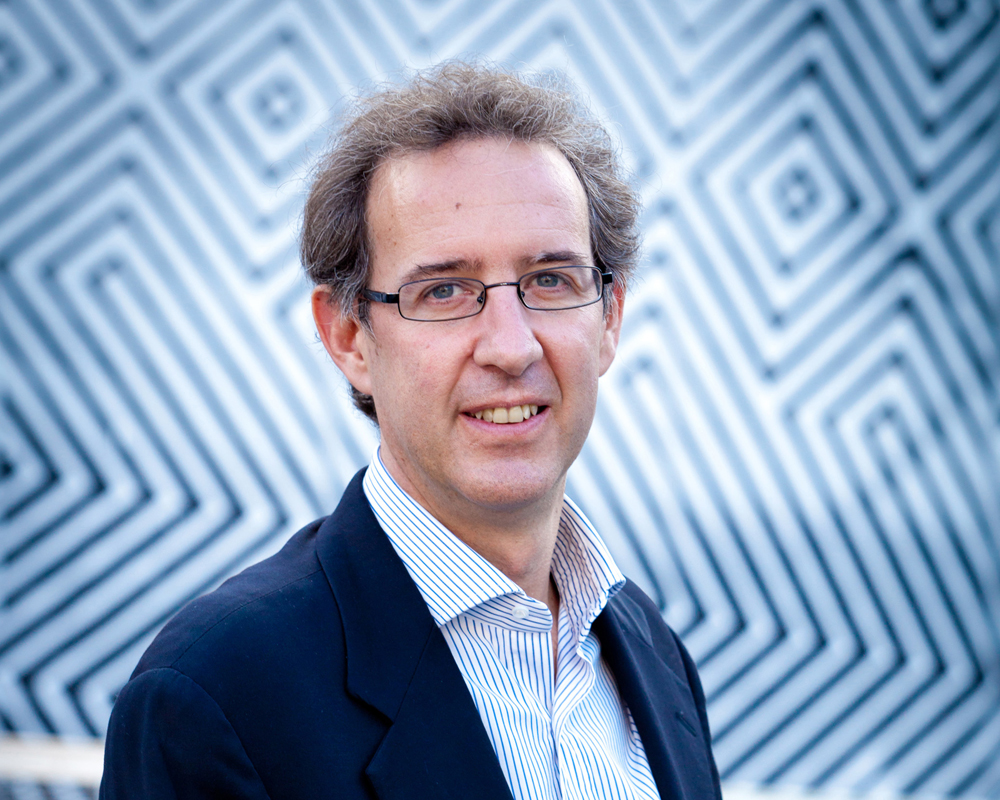
Italian Pavilion in the 55th International Art Exposition of the Venice Biennale
vice versa
Curator Bartolomeo Pietromarchi
Commissioner Maddalena Ragni
Venice (Tese delle Vergini, Arsenale)
June 1st – November 24th 2013
PRESS RELEASE
THE EXPOSITION PROJECT
Vice versa is the title chosen by curator Bartolomeo Pietromarchi for the Italian Pavilion exhibition project at the 55th International Art Exposition of the Venice Biennale, promoted by the Ministry for Cultural Heritage and Activities through the Directorate-General for the Landscape, Fine Arts, Architecture and Contemporary Art.
Vice versa picks up on a concept introduced by Giorgio Agamben in his book Categorie italiane. Studi di Poetica (1996), in which the philosopher maintained that in order to interpret Italian culture, we must identify a “series of diametrically linked concepts” capable of describing its underlying characteristics – binomials like tragedy/comedy, architecture/vagueness and speed/lightness thus become original keys for reading the fundamental works and artists of our cultural history.
This reflective and dialectical approach, and in particular the dimension of duality, is one of the most profoundly characteristic aspects of Italian contemporary art. We need only cite the poetics of artists like Alighiero Boetti, Giulio Paolini, Michelangelo Pistoletto, Luigi Ontani and Gino De Dominicis, whose experimentation is based on opposing polarities: order and disorder, image and reflection, visible and invisible, and the boundaries between reality and fiction, original and copy, tragedy and comedy that tend to dissolve. The antithetical nature of our culture thus produces works that turn reality into fiction and fiction into reality, in which, playing the game of vice versa, landscape becomes stage, history becomes performance, artwork becomes theater and pop imagery becomes personal history.
Inspired by this vision, vice versa proposes an exposition made up of seven rooms, seven spaces, each of which hosts two artists in dialogue with one another, in which the works shown reveal the profound sense of this dialectical approach.
The exhibition is thus an ideal journey through Italian art of yesterday and today, an itinerary that tells of identities and landscapes – real and imaginary -, exploring the complexity and stratification of the country’s artistic and anthropological vicissitudes. It offers a portrait of recent art, no longer read as a clash between movements and generations, but as an atlas of themes and approaches that can be traced back to our national history and culture, in a cross-dialogue of correspondences, derivations and differences, among the figures of acclaimed maestros and artists of later generations.
The fourteen invited artists are:
Francesco Arena, Massimo Bartolini, Gianfranco Baruchello, Elisabetta Benassi, Flavio Favelli, Luigi Ghirri, Piero Golia, Francesca Grilli, Marcello Maloberti, Fabio Mauri, Giulio Paolini, Marco Tirelli, Luca Vitone, Sislej Xhafa.
Vice versa will thus be presented as an exploration of the fundamental traits of our cultural and contemporary artistic identity, organized by theme and divided into seven areas. A dualistic way of looking at the landscape, in which the meaning of a place, suspended between vision and memory, emerges in the works of Ghirri and Vitone; the troubled and contradictory relationship with history in its personal and collective dimensions comes to the fore in Mauri and Arena, who deal with unresolved gaps in history through the filter of the body and of performance. Dialectic slipperiness and continual swerves between tragedy and comedy turn up in works by Golia and Xhafa, hovering between lived life and imagined life – a dimension also found in the works of Maloberti and Favelli, who chip away at the boundaries between autobiography and collective imagination through references to culture and pop-folk traditions. A dialectic propensity also characterizes the work of Giulio Paolini, who dialogues in this context with Marco Tirelli on the theme of art as illusion, as perspective gaze: an invitation to enter another dimension, one that forces us to teeter on the edge between reality and representation. This gambit turns up again in the exhibition in the juxtaposition of sound and silence, freedom of speech and censorship, as in the work of Massimo Bartolini and Francesca Grilli; the showcase closes with the works of Baruchello and Benassi, in the tension between fragment and system in which the human desire to archive and classify things clashes with impossibility and the failure to do so.
The exhibition presents mainly works produced specifically for the occasion: installations, sculptures, paintings, performances, sound and ambient interventions, inside and outside the Pavilion. They express the vital complexity of our recent art, made up of intuitions and contradictions – among the originating elements of the concept of vice versa -, affirming its originality and international significance.
THE CATALOG
The coordinated image of vice versa – from the logo to the communications campaign, from the invitations to the exhibition panels to the catalog – will be developed by Mousse Agency. The publication accompanying the exhibition will be published in Italian and English, and will contain an important selection of original material documenting the conception and creation of the works on exhibition. In addition to sections dedicated to the individual artists, including technical details and information on their work, the catalog will reflect the structure of the exhibition itself, with seven essays, one dedicated to each of its thematic dialogues, by important Italian and international critics.
.-.-.-
THE CROWDFUNDING PROJECT – http://viceversa2013.org/it/home/
In support of the exhibition vice versa in the Italian Pavilion at the 55th International Art Exposition of the Venice Biennale, the curator is proposing a crowdfunding project, in the wake of successful recent international experiences such as the Louvre’s Tous Mécènes campaigns and Let’s Build a Goddamn Tesla Museum in the U.S. Vice versa will thus become an opportunity to test new pathways for support and alternative modes of financing and participating in a cultural event.
February 12th, 2013 is the launch date for the crowdfunding project, which will allow anyone who wishes to actively participate in and personally support the event.
This initiative is intended to support the artists’ work, cultural mediation and educational efforts geared towards schools, universities and exhibition visitors, promotions and communications, the organization of encounters with artists and opinion leaders, and a concluding conference on the Pavilion’s themes.
The spirit of participation and support for the exhibition project will be recognized through a series of benefits corresponding to target support levels.
The 90-day fundraising period will be inaugurated with events in Rome, Milan, London and New York, and will continue on the web (www.vicecersa2013.org).
.-.-.
INFORMATION
Italian Pavilion Inauguration: Thursday, May 30th, 2013, 11.30 am
Open to the public: June 1st to November 24th, 2013
Location: Venice, Tese delle Vergini all’Arsenale
PRESS INFO
Italian Pavilion Press Office
Maria Bonmassar | M. +39 335 49 03 11 | maria.bonmassar@gmail.com
Ludovica Solari | M. +39 335 577 17 37 | ludovicasolari@gmail.com
Italian Pavilion International Press Office
Rhiannon Pickles | M. +31 (0) 6158 21202 | rhiannon@picklespr.com
Maria Cristina Giusti | M. +44 (0) 792 581 0607 | cristina@picklespr.com
Communications – Directorate General PaBAAC / MiBAC
Alessandra Pivetti | M. +39 366 64 82 897 | alessandra.pivetti@beniculturali.it
Gaia Gallotta | T. +39 06 58 43 48 16 | gaia.gallotta@beniculturali.it
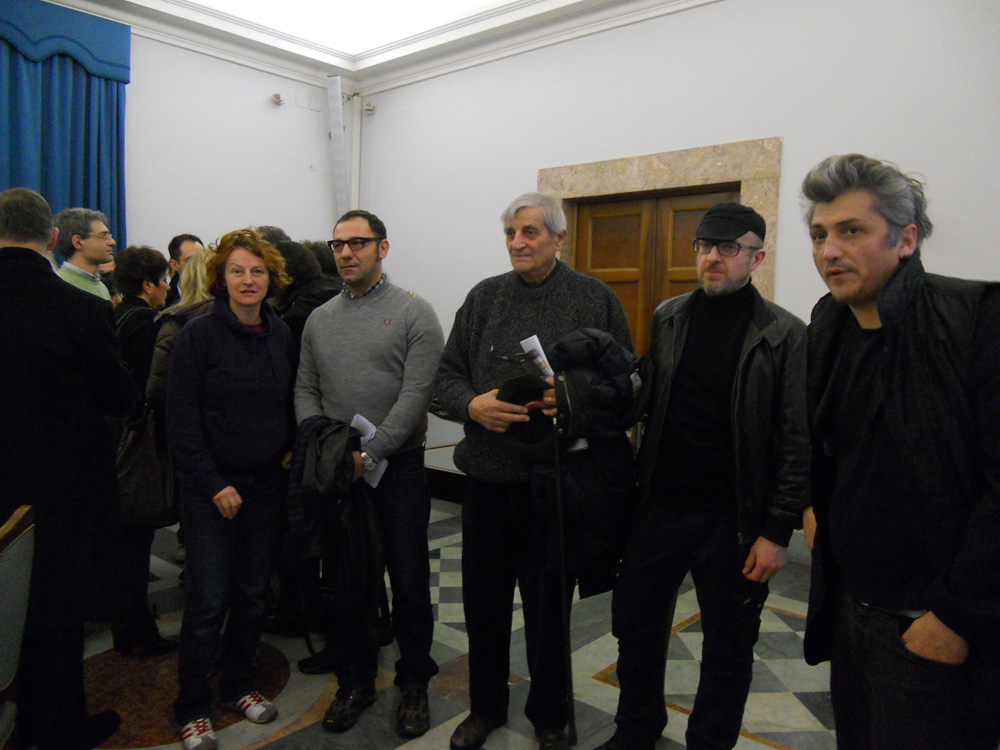
Italian Pavilion in the 55th International Art Exposition of the Venice Biennale
vice versa
Crowdfunding project
In support of the exhibition vice versa in the Italian Pavilion at the 55th International Art Exposition of the Venice Biennale, the curator is proposing a crowdfunding project, in the wake of successful recent international experiences such as the Louvre’s Tous Mécènes campaigns and Let’s Build a Goddamn Tesla Museum in the U.S. Vice versa will thus become an opportunity to test new pathways for support and alternative modes of financing and participating in a cultural event.
February 12th, 2013 is the launch date for the crowdfunding project, which will allow anyone who wishes to actively participate in and personally support the event.
Crowdfunding is collaborative financing process in which numerous people back projects, initiatives or start-ups by contributing sums of money, large or small.
The method can be applied to various types of projects, from charitable aid and the humanitarian sector, to support for the arts and cultural heritage, to participatory journalism, to innovative entrepreneurship, to scientific research.
The web is typically the platform that connects and facilitates collaboration among subjects involved in a crowdfunding project, whose interaction – along with the power of viral propagation of information – brings economic value.
The spirit of participation and support for the exhibition project will be recognized through a series of benefits corresponding to target support levels: each supporter’s name will appear at the vice versa exhibition entrance, in the catalog and on the web site; for the occasion, a set of fourteen limited-edition prints by the artists in the exhibition, signed and numbered, will be put together. Other benefits will include copies of the catalog signed by the curator and the artists, guided visits, personal welcomes, invitations to the inauguration of vice versa at the Italian Pavilion at the 55th International Art Exposition of the Venice Biennial, encounters with the curator and the artists, and much more.
The 90-day fundraising period will be inaugurated with events in Rome, Milan, London and New York, and will continue on the web (www.vicecersa2013.org).
Destination of funds gathered through crowdfunding
Funds gathered through crowdfunding will be designated, in agreement with the Ministry for Cultural Heritage and Activities, for the financing of various initiatives for the exhibition vice versa at the Italian Pavilion at the 55th International Art Exposition, including:
- Additional funding for artists’ works and productions
- Cultural mediation and educational activities geared towards schools, universities and visitors
- Promotional and communications activities, including a vice versa exhibition App
- Organization of encounters with artists and opinion leaders and a concluding conference on the themes of the Italian Pavilion
Duration of the fundraising campaign
The crowdfunding project will be launched on February 6th, 2013 – the same date on which the exhibition vice versa at the Italian Pavilion at the 55th International Art Exposition will be presented to the press -, and will last 90 days.
Possible financing targets and destination of relative funds
Based on the amount of funds raised, the following activities may be supported in different ways:
€50,000 designated to support:
- Additional funding for the artists’ work and productions
€70,000 designated to support:
- Additional funding for the artists’ work and productions
- Cultural mediation/educational activities geared towards schools, universities and visitors
€100,000 designated to support:
- Additional funding for the artists’ work and productions
- Cultural mediation/educational activities geared towards schools, universities and visitors
- Promotional and communications activities, including the creation of a vice versa exhibition App
€120,000 designated to support:
- Additional funding for the artists’ work and productions
- Cultural mediation/educational activities geared towards schools, universities and visitors
- Promotional and communications activities, including the creation of a vice versa exhibition App
- Organization of encounters with artists and opinion leaders and a concluding conference on the themes of the Italian Pavilion
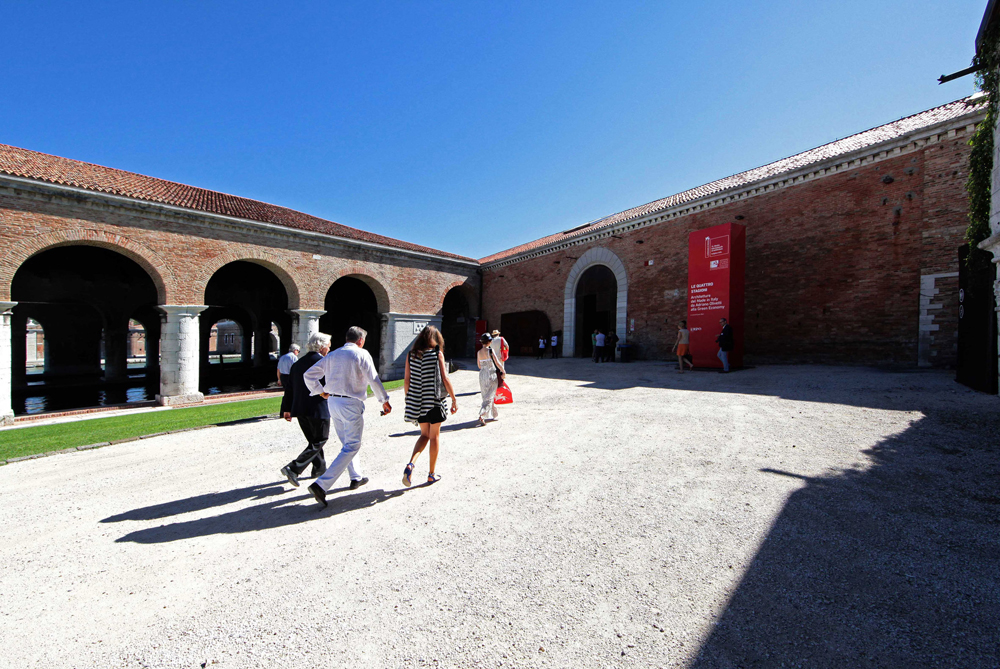
Italian Pavilion in the 55th International Art Exposition of the Venice Biennale
vice versa
Bartolomeo Pietromarchi
Biographical notes
Bartolomeo Pietromarchi, born in Rome in 1968, is a critic and curator of art. From August 2011, he has been the Director of MACRO – Museo d’Arte Contemporanea Roma. From 1998 to 2003 he directed the contemporary art program of the Fondazione Adriano Olivetti of which, from 2003 to 2007, he assumed the role of Director. In 2007 and 2008 he was curator of the Fondazione Hangar Bicocca in Milan and from 2008 to 2011 he was curator of MAXXI, Museo Nazionale della Arti del XXI secolo, where he developed, among others, the Premio Italia arte contemporanea project. He is author of many essays and publications on art, the most recent of which is, Italia in opera, La nostra identità attraverso le arti visive, edited by Bollati Boringhieri (2011). Bartolomeo Pietromarchi is the curator of the Italian Pavillion at the 55th International Art Exhibition Venice Biennale.
Curitorial Activities. Projects and exhibitions (selection)
Jimmie Durham. Streets of Rome and Other Stories, exhibition, MACRO – Museo d’Arte Contemporanea Roma, 2012 –2013
Neon. La materia luminosa dell’arte, (with D. Rosenberg), exhibition, MACRO – Museo d’Arte Contemporanea Roma, 2012
Marcello Maloberti. Blitz, (with S. Chiodi), exhibition and performance, MACRO – Museo d’Arte Contemporanea Roma, 2012
Mircea Cantor. Sic Transit Gloria Mundi, (with S. Chiodi), exhibition, MACRO – Museo d’Arte Contemporanea Roma, 2012
Marco Tirelli, exhibition, MACRO – Museo d’Arte Contemporanea Roma, 2012
Premio Italia arte contemporanea. Rosa Barba, Rossella Biscotti, Gianluca e Massimiliano De Serio, Piero Golia, project and exhibition, MAXXI, Museo delle arti del XXI secolo, Rome, 2010
Flavio Favelli. Itavia Aerolinee, (with Maria Alicata), urban project, to commemorate thirty years since the Ustica tragedy, Bologna, Piazza 8 Agosto and Piazza Maggiore, May/June 2010
Spazio. Dalle collezioni di arte e architettura del MAXXI, (with Pippo Ciorra, Alessandro D’Onofrio, Gabi Scardi), exhibition, MAXXI, Museo delle arti del XXI secolo, Rome, 2010
Santiago Sierra. Ponticelli, exhibition, Museo Madre, Naples, 2009
Lucy + Jorge Orta, The Meal Act XXIX, (with Maria Perosino), project and performance, Venaria Reale, Turin, 2008
Armin Linke. Immaginario Nucleare, project and exhibition, Istituto Nazionale per la grafica – Calcografia Nazionale, Rome, 2008 and Palazzo M, Latina, 2009
Alfredo Jaar. It is Difficult, (with Gabi Scardi), exhibition, Hangar Bicocca Spazio d’arte contemporanea and Spazio Oberdan, Milan, 2008
Lucy + Jorge Orta, Antarctica, exhibition, Hangar Bicocca Spazio d’arte contemporanea, Milan, 2008 and Le Moulin, Espace d’Art Contemporain, Boissy-le-Chatel, France, 2008
The Hot Season, Italian Art Now, (with Lorella Scacco), exhibition, Stenersen Museum, Oslo, 2008
Emergenze, quando arte e cultura guardano alla realtà, project, Milan, different locations, 2007
NowHere Europe, exhibition, Collateral event 51. Esposizione Internazionale d’Arte della Biennale di Venezia, Venice, 2005; CAVS (Center for Advanced Visual Studies), MIT, Boston, 2005; MNAC, National Museum of Contemporary Art Bucarest, 2006
Trans:it. Moving Culture Through Europe, multi-year project, Fondazione Adriano Olivetti, European Cultural Foundation, Fondation de France, Evens Foundation, J. F. Kostopulos Foundation, 2003 – 2006
Creazione contemporanea. Arte, società e territorio tra pubblico e privato, convention, Fondazione Adriano Olivetti, ECCOM, 2002
Nuovi Committenti. Un programma d’arte per lo spazio pubblico, multi-year project, Progetto Europeo Urban, Mirafiori Nord, Turin, 2001 – 2007
Prototipi.01, 02, 03, Laboratorio di cultura artistica contemporanea, (with Stefano Chiodi), workshop and exhibition, Fondazione Adriano Olivetti, Rome, 2001, 2002, 2003
Publications and catalogues (selection)
Neon. La materia luminosa dell’arte,exhibition catalog, MACRO – Museo d’Arte Contemporanea Roma, Quodlibet, Rome, 2012
Marcello Maloberti. Blitz, exhibition catalog, MACRO – Museo d’Arte Contemporanea Roma, Quodlibet, Rome, 2012
Marco Tirelli, exhibition catalog, MACRO – Museo d’Arte Contemporanea Roma, Quodlibet, Rome, 2012
Rossella Biscotti. Ten Works, monographic catalog, MAXXI – Museo nazionale delle arti del XXI secolo, Mousse Publishing, Milan, 2012
Italia in opera. La nostra identità attraverso le arti visive, Bollati Boringhieri, Turin, 2011
Santiago Sierra. Ponticelli, exhibition catalog, Electa, Milan, 2009
Alfredo Jaar. It is Difficult, (with Gabi Scardi), exhibition catalog, Edizioni Corraini, Milan, 2008
Lucy + Jorge Orta, Antarctica, exhibition catalog, Electa, Milan, 2008
The Hot Season, Italian Art Now, (with Lorella Scacco), exhibition catalog, Stenersen Museum, Oslo, 2008
Armin Linke, Tommaso Pincio – Immaginario Nucleare, Pocko Editions, London, 2007
Immaginare Corviale. Pratiche ed estetiche per la città contemporanea, (with Flaminia Gennari Santori), Bruno Mondadori Ed., Milan, 2006
Il luogo (non) comune. Arte, spazio pubblico ed estetica urbana in Europa, (ed. italian and english), ACTAR, Barcelona, 2005
Creazione Contemporanea. Arte, società e territorio tra pubblico e privato, (with M. De Luca, F. Gennari Santori, M. Trimarchi), Luca Sossella Editore, Rome, 2004
Prototipi, Laboratorio di cultura artistica contemporanea, (with Stefano Chiodi), Luca Sossella Editore, Rome, 2004
Mario Merz. Igloo, Testo & Immagine, Turin, 2001
Gravità zero. Arte, tecnologia e nuovi spazi dell’identità, exhibition catalog, Ediz. Palazzo delle Esposizioni, Rome, 2001
.-.-.-.
Italian Pavilion in the 55th International Art Exposition of the Venice Biennale
vice versa
ARTISTS BIOGRAPHIES
Francesco Arena was born in Torre Santa Susanna (Brindisi) in 1978, and lives and works in Cassano delle Murge (Bari).
Historical, political and social episodes and events from Italian news reports of the past few decades are Arena’s point of departure. His meticulous study of archives and documents and exploration of the relationship between history and the individual give rise to projects that materialize in elemental sculptural forms, often created using artisanal techniques, and in performances that propose new keys for reading and interpreting events
In solo and group shows, the artist’s works have been displayed at various sites, including the Museion in Bolzano (2012), Castello di Rivoli in Turin (2012), the Peep Hole in Milan (2011), the GAMeC in Bergamo (2011), Art Basel in Basel (2010), the Kunsthalle in Mulhouse (2010), the MOCA in Shanghai (2010) and the G.A.M. in Bologna (2005).
Francesco Arena has also received several honors and awards, including the New York Prize from the Ministry of Foreign Affairs (2012), the Furla Prize (2011) and the Terna Prize for contemporary art (2008). He is currently in residence at the ISCP in New York.
Massimo Bartolini was born in 1962 in Cecina (Livorno), where he lives and works.
The artist develops his poetics through a variety of languages, giving life to works that are always closely linked to their settings. Through the use of diverse elements, Bartolini acts on the space, disposing with the classic space-time coordinates and creating new and unexpected dimensions. The viewer, with his senses and his perceptions, plays a determining role in these works, exploring new points of view and acquiring a different sensibility to objects and places.
Massimo Bartolini has been the protagonist of numerous exhibitions in Italy and abroad. His works have been shown in various locations, including the Museion in Bolzano (2010), the MAXXI in Rome (2008), the Fundação Serralves in Porto (2007), the Boijmans van Beuningen in Rotterdam (2004), the Centro per l’Arte Contemporanea Luigi Pecci in Prato (2003), the P.S.1 in New York (2001) and the De Appel Center in Amsterdam (1998).
He has also participated in several major international events, including Manifesta 4 (Frankfurt, 2002) and the 48th and 53rd Venice Biennials (1999 and 2009).
Gianfranco Baruchello was born in Livorno in 1924, and lives and works in Rome and Paris.
Baruchello met Marcel Duchamp in 1962. His collaborators have included Felix Guattari, David Cooper and Jean-François Lyotard, who published a book about Baruchello (La pittura del segreto nell’epoca postmoderna, 1982). In the late 1950s, he explored the latest American and European developments, while maintaining his own independent path. In addition to video and film – with which he was an early experimenter –, his expressive means came to include drawing, painting, activity, publishing and installation, progressively moving away from traditional languages.
Since his first solo show in 1963 at Galleria La Tartaruga in Rome, his work has been the object of numerous exhibitions at prestigious international sites, including Gallery du Cercle (1962) in Paris, the Sidney Janis (1962) and Cordier & Ekstrom Galleries (1964, 1966), the MoMA (1965 and 1970) and Guggenheim Museums in New York (1966, 1969 and 1970), the Palais des Beaux-Arts in Brussels (1967 and 1974), the Musée d’Art Moderne (1968, 1970, 1975 and 1976) and the Centre Pompidou (1989, 2000, 2001, 2006, 2009, 2010 and 2011), in Paris, and the Serpentine Gallery in London (2011).
Baruchello has participated in dOCUMENTA in Kassel (1976, 2011) and in numerous editions of the International Art Exposition of the Venice Biennial (1972, 1976, 1980, 1986, 1988, 1990, 1993 and 2011). The Fondazione Baruchello was established in 1998, and 2011 saw a large anthological exhibition at the Galleria Nazionale d’Arte Moderna of Rome.
Elisabetta Benassi was born in 1966 in Rome, where she lives and works.
Making references to cultural, political and artistic traditions of the Twentieth Century as well as to controversial contemporary themes, Elisabetta Benassi’s work dwells in the difficult space of our present. Underlying her work, we can always find a question about the contemporary condition and identity, specifically their relationship to the historic past, and a cue to reconsider it, looking at it against the light and producing a different moral focus in the viewer. Reconstructing a different way of reading reality and broadening the field of consciousness are thus the fundamental operations of her work.
Her most recent exhibitions include: Voglio fare subito una mostra (upcoming solo show), Fondazione Merz, Turin (2013); Newtopia: The State of Human Rights. Exhibition for the City of Mechelen in Belgium (2012); Mutatis Mutandis, Wiener Secession, Vienna (2012); Blind Spot, Berlin Documentary Forum 2, Haus der Kulturen der Welt, Berlin (2012); Art and Press. Martin-Gropius-Bau, Berlin; ZKM | Center for Art and Media, Museum of Contemporary Art, Karlsruhe (2012); A proposito di Marisa Merz at the MAXXI, Rome (2012); Venice Biennial, ILLUMInazioni/ ILLUMInations (2011); Tutto è connesso 2 at Castello di Rivoli, Turin (2011); Soledad, Fiac! at the Grand Palais, Paris (2011); Unlimited, Art | 40 | Basel (2009).
Flavio Favelli was born in Florence in 1967, and lives and works in Savigno (Bologna).
After earning a degree in Oriental History at the Università di Bologna, Favelli participated in the Link Project (1995-2001). His experimentation draws together innovation, memory and tradition and reclaims the artisanal creativity of artistic work, concretized in the physicality of real places, but contemporaneously present in mental spaces animated by memory.
He has shown in public and private spaces in Italy and abroad. His personal projects have been carried out at numerous sites: Fondazione Pescheria – Centro Arti Visive in Pesaro (2010), Museo Marino Marini in Florence (2009), galleria S.A.L.E.S. in Rome (2008), Fondazione Sandretto Re Rabaudengo in Turin (2007), la maison rouge in Paris (2007), Museo Pecci in Prato (2005), Project Space 176 in London (2005), IIC in Los Angeles (2004), Galleria Maze in Turin (2003).
Group shows include: IBID Project in London (2011); Progetti Speciali at MACRO in Rome (2011); Sotto quale cielo? at the Museo Riso in Palermo (2011); Spazio at MAXXI in Rome (2010); Elgiz Museum in Istanbul (2008); Italics at Palazzo Grassi in Venice, and at MCA in Chicago (2008); XV Quadriennale of Rome (2008); Clandestini at the 50th International Art Exhibition, Venice Biennial (2003).
In 2010, he had a residency at the American Academy in Rome for the Italian Fellowship. In 2012 he was invited to participate in the 11st Havana Biennial in Cuba and the exhibition La storia che non ho vissuto at the Museo del Castello di Rivoli.
Luigi Ghirri (Scandiano, 1943 – Roncocesi, 1992).
In 1975, Ghirri was named “Discovery of the Year” by Time-Life Photography Year. In 1979 he published Kodachrome, and the CSAC in Parma dedicated an exhibition and catalog to him that marked a turning point in Italian photography. In 1982 he began working on depiction of the landscape and urban spaces, and was recognized as one of the twenty most important figures in Twentieth-century photography.
In 1984 he was curator of the exhibition and catalog Viaggio in Italia, and in 1989 he published Paesaggio italiano and II profilo delle nuvole. The landscapes he photographs evoke metaphysical, almost unreal atmospheres, rarely directly inhabited by human figures, but always testifying to the presence of man. Ghirri proposes color photographs, favoring muted tones developed through meticulous technical experimentation. The volume Niente di antico sotto il sole, containing all his writings and interviews and an anthology of his images, was published in 1997.
His works are in collections including: Stedelijk Museum (Amsterdam), Musée de la Photographie Reattu (Arles), Polaroid Collection (Cambridge, Mass.), Canadian Centre for Architecture-Centre Canadien d’Architecture (Montreal), Museum of Modern Art (New York), Cabinets des Estampes-Bibliothèque Nationale (Paris), CSAC – Centro Studi e Archivio della Comunicazione (Parma).
Piero Golia was born in Naples in 1974, and lives and works in Los Angeles.
Through a variety of different languages and forms – from installation to performance to sculpture –, his work aims to constantly blur the boundaries between reality and imagination, possible and impossible, veracity and fiction, and is distinguished by a bitingly ironic approach.
Golia’s work has been presented in important institutions in Europe and the U.S., including the MAXXI in Rome (2011), Le Magasin di Grenoble (2010), the MOCA in Los Angeles (2010), the Orange County Museum of Arts (2008), the Moderna Museet in Stockholm (2007) and the P.S.1 in New York (2007).
He has had numerous solo shows in public and private exhibition spaces, among the most recent of which at the Gagosian Gallery in Los Angeles (2011) and the Stedeljik Museum in Amsterdam (2011).
Francesca Grilli was born in Bologna in 1978, and lives and works in Bologna and Amsterdam.
Her experimentation explores the realm of sound, in its manifold expressive and perceptive implications. Opting to utilize the language of performance, her works move from private and personal elements into spectators’ space of action, drawing them into an ambiguous and unsettling territory.
Her solo shows include the exhibition at MACRO in Rome (2012) — the result of a lengthy period of residency at the museum — and The Conversation at the MAMBO in Bologna (2010).
Her work has been presented at numerous exhibition sites in Italy and abroad, such as the MADRE in Naples (2012), the Galleria d’Arte Contemporanea in Monfalcone (2012), the Serpentine Gallery in London (2010) and Manifesta7 in Bolzano (2008).
She has participated in numerous performance festivals, including: Drodesera Festival at the Centrale Fies in Trento, Mantica at the Teatro Comandini in Cesena, DNA del Romaeuropa Festival, UOVO Performing Arts Festival in Milan and Santarcangelo dei Teatri in Rimini.
Marcello Maloberti was born in Codogno (Lodi) in 1966, and lives and works in Milan and New York.
His work takes an unconventional look at contemporary reality, animated by empathy, humor and irony. His performances and installations engage the urban scenario in unpredictable ways, reactivating everyday situations and behaviors and cross-pollinating them with personal memories and collective imagery.
His solo shows include those at the MACRO in Rome (2012), the Generali Foundation in Venice (2010) and the GAMeC in Bergamo (2009).
He has participate in numerous group shows in important public and private exhibition spaces, such as the Kunstverein in Frankfurt (2012), the Mac/Val in Vitry (2012), the CAC in Bretigny (2011), the Museum of Modern Art of Ljubljana (2011), the Museion in Bolzano (2010), the Royal Academy of Arts in London (2010), the Milan Triennial (2008 and 2012) and the Collection Lambert di Avignone (2005).
Also of note, he participated in the Copenhagen Art Festival in 2012, the Nuit Blanche in Paris in 2011 and the Performa event in New York in 2009.
Fabio Mauri (Rome, 1926-2009)
Fabio Mauri (Rome 1926-2009) produced a highly articulated body of artistic experimentation: theater, performance, installation, painting, theory and teaching were the elements of a unique expressive stance.
His first monochromatic works and Schermi date to 1957. In the 1970s, Mauri turned his attention to the ideological component of the linguistic avant-garde, proposing works like Ebrea (1971) and Che cosa è il fascismo (1971). He participated in the Venice Biennial in 1954, 1974, 1978 and 1993, where he showed Muro Occidentale o del Pianto.
He had three extensive retrospectives: Fabio Mauri Opere e Azioni. 1954-1994, at the Galleria Nazionale d’Arte Moderna e Contemporanea in Rome (1994); Das Böse und das Schöne. Male e Bellezza, at the Kunsthalle in Klagenfurt, Austria (1997), and Fabio Mauri. L’écran mental at Le Fresnoy, Studio National des Arts Contemporains, Lille (2003). His works have been shown at the Moca in Los Angeles, the Museum of Contemporary Art of Chicago, the Palazzo delle Esposizioni in Rome and P.S.1 in New York.
In 2007 he participated in the exhibition Not Afraid of the Dark in Milan. In 2009, his final work, Fabio Mauri etc, was shown at Galleria Michela Rizzo in Venice. In 2012 his work was seen at dOCUMENTA (13) in Kassel and at the Palazzo Reale in Milan with the exhibition Fabio Mauri. The End.
His intense and impassioned work is gathered in his final published work, Io sono un ariano, and continues through Studio Fabio Mauri.
Giulio Paolini was born in Genoa in 1940, and lives and works in Turin.
Giulio Paolini’s artistic efforts deal with themes exploring the status of the work of art, its essence and how it manifests itself in a space. Frequently associated with the Arte Povera movement, his works are marked by a strong conceptual rigorousness and a language that makes use of expedients like citation, fragmentation and duplication to highlight the tautological nature of artistic work and the dynamics of the author-artwork-viewer relationship.
Since his first solo show in 1964 at La Salita gallery in Rome, Paolini has had innumerable exhibitions in galleries and museums worldwide. Among the most important were those held at Palazzo della Pilotta in Parma (1976), the Stedelijk Museum in Amsterdam (1980), the Nouveau Musée of Villeurbanne (1984), the Staatsgalerie in Stuttgart (1986), the Galleria Nazionale d’Arte Moderna in Rome (1988), the Neue Galerie am Landesmuseum Joanneum in Graz (1998), the Fondazione Prada in Milan (2003) and the Kunstmuseum in Winterthur (2005).
He has been invited numerous times to participate in Documenta in Kassel (1972, 1977, 1982, 1992) and the Venice Biennial (1970, 1976, 1978, 1980, 1984, 1986, 1993, 1995, 1997).
From the start of his career, Paolini has always accompanied his artistic production with reflections and declarations, collected in artist’s books, anthologies of his writings and other publications. He has also been involved in several collaborations for the theater.
Marco Tirelli was born in 1956 in Rome, where he lives and works.
His painting is the result of a complex intellectual process, beginning with the recording of real visual data which he ultimately distills into pure forms and allusions to space and light. An analysis of the relationship between form – always hovering between recognizability and abstraction – and light is thus his point of departure in exploring the possibilities and limitations of perception.
He first presented his work at the Venice Biennial in 1982, and has had important solo shows at the MACRO in Rome (2012), the Museo di Palazzo Fortuny in Venice (2010), the Galleria Comunale d’Arte Moderna in Bologna (2003), the Institut Mathildenhöhe in Darmstadt (2002), the Galleria Civica of Modena (1992) and the American Academy in Rome (1990), where his drawings were exhibited in a dialogue with some of Sol Lewitt’s wall drawings.
He has participated in numerous group shows at Italian institutions like the Mart in Rovereto (2005, 2007, 2009 and 2012), the Galleria Nazionale d’Arte Moderna (2004 and 2010) and the MAXXI in Rome (2010), as well as important international expositions, including the Quadriennale di Roma (1986 and 1996) and the Biennials of Sao Paolo (1991), Sydney (1990) and Paris (1985).
Luca Vitone was born in Genoa 1964, and lives and works in Berlin.
A crucial element in the artist’s work is exploration of the relationships that tie contemporary man to his homeland and to the environment he inhabits. Using a language that brings in elements from other disciplines, such as sociology, geography and pop literature, Vitone has launched an investigation of the traces man leaves in the environment and the stratification of different traditions and cultures.
Luca Vitone has shown in private and public exhibition spaces in Italy and abroad, including: the Museion in Bolzano (2012), la maison rouge in Paris (2012), the GAMeC in Bergamo (2008), the MART in Rovereto (2007), the Palais de Tokyo in Paris (2005), the Centre National d’Art Contemporain in Nice (2004) and P.S.1 in New York (2000).
He also participated in the 13th edition of the Biennale di Scultura in Carrara (2009), the 14th edition of the Quadriennale d’Arte in Rome (2005) and the 50th International Art Exposition of the Venice Biennial (2003).
Sislej Xhafa was born in Peja (Kosovo) in 1970, and lives and works in Brussels and New York.
In 1988 Sislej Xhafa left Kosovo for London, where he remained for a period before moving to Florence to attend the Academy of Fine Arts there. In Italy, he consolidated a language manifested through a variety of media: video, performance, photographs and installations. Through diversified forms of expression, Xhafa uses irony and intelligence to shed light on the complexity of themes connected to immigration and the profound political and cultural differences among the countries he has passed through.
Since his first exhibition at the Rookery Building in Chicago (1995), and having won the Querini Stampalia – Furla Prize for young Italian art (2000), he has participated in several Italian and international exhibitions. His work has been presented at the P.S.1 in New York and the Kunsthalle in Bern (2001), at the National Institute for Graphic Arts in Rome and Palazzo Strozzi in Florence (2008), among other places.
He has also participated in numerous international events such as the Biennials of Istanbul (2001), Kwanju, Korea (2002) and Tirana (2003).
In 1997, he illegally entered the Venice Biennial, proposing the Padiglione albanese clandestino, and returned with official invitations for the 48th and 51st editions (1999 and 2005).
.-.-.
Padiglione Italia alla 55. Esposizione Internazionale d’Arte della Biennale di Venezia
vice versa
Venezia (Tese delle Vergini, Arsenale)
1° giugno – 24 novembre 2013
Curatore Bartolomeo Pietromarchi
Commissario Maddalena Ragni
COMUNICATO STAMPA
IL PROGETTO ESPOSITIVO
Vice versa è il titolo scelto dal curatore Bartolomeo Pietromarchi per il progetto espositivo del Padiglione Italia alla 55. Esposizione Internazionale d’Arte della Biennale di Venezia, promosso dal Ministero per i Beni e le Attività Culturali attraverso la Direzione Generale per il Paesaggio, le Belle Arti, l’Architettura e l’Arte Contemporanee.
Vice versa riprende un concetto teorizzato da Giorgio Agamben nel volume Categorie italiane. Studi di Poetica (1996), in cui il filosofo sostiene che per interpretare la cultura italiana sia necessario individuare una “serie di concetti polarmente coniugati” capaci di descriverne le caratteristiche di fondo. Binomi quali tragedia/commedia, architettura/vaghezza o velocità/leggerezza divengono così originali chiavi di lettura di opere e autori fondanti della nostra storia culturale.
Questa attitudine speculare e dialettica, e in particolare la dimensione del doppio, è uno degli aspetti che più profondamente caratterizzano l’arte contemporanea italiana. Basti citare la poetica di artisti come Alighiero Boetti, Giulio Paolini, Michelangelo Pistoletto, Luigi Ontani e Gino De Dominicis che basano la propria ricerca su polarità contrapposte: ordine e disordine, immagine e riflesso, visibile e invisibile, i confini tra realtà e finzione, originale e copia, tragedia e commedia tendono a dissolversi. La natura antitetica della nostra cultura produce così opere che ribaltano la realtà in finzione e la finzione in realtà, dove nel gioco del vice versa il paesaggio diviene palcoscenico, la storia performance, l’opera teatro, l’immaginario popolare storia personale.
Ispirandosi a questa visione, vice versa propone un percorso espositivo composto da sette stanze, sette ambienti ognuno dei quali ospita due artisti in dialogo tra loro, dove il senso profondo di questa vocazione dialettica è manifestato dalle opere esposte.
La mostra diviene così un viaggio ideale nell’arte italiana di oggi e di ieri, un itinerario che racconta identità e paesaggi – reali e immaginari – esplorando la complessità e le stratificazioni della vicenda artistica e antropologica del paese. Un ritratto dell’arte recente non più letta come contrapposizione tra movimenti e generazioni, ma come un atlante di temi e di attitudini, riconducibili alla storia e alla cultura nazionali, in un dialogo incrociato di corrispondenze, derivazioni e differenze, tra figure di maestri riconosciuti e artisti delle generazioni successive.
I quattordici artisti invitati sono:
Francesco Arena, Massimo Bartolini, Gianfranco Baruchello, Elisabetta Benassi, Flavio Favelli, Luigi Ghirri, Piero Golia, Francesca Grilli, Marcello Maloberti, Fabio Mauri, Giulio Paolini, Marco Tirelli, Luca Vitone, Sislej Xhafa.
Vice versa si presenta così come un’esplorazione dei caratteri fondanti della nostra identità culturale e artistica contemporanea articolata in un percorso tematico suddiviso in sette aree. Il doppio sguardo sul paesaggio, in cui il significato di luogo, sospeso tra visione e memoria, emerge dalle opere di Ghirri e di Vitone; il rapporto sofferto e contraddittorio con la storia declinato tra dimensione personale e collettiva si manifesta in Mauri e Arena che affrontano, attraverso il filtro del corpo e della dimensione performativa, i buchi irrisolti della storia. Ancora, il gioco dialettico e i continui slittamenti tra tragedia e commedia si ritrovano nei lavori di Golia e Xhafa sempre in bilico tra vita vissuta e vita immaginata; una dimensione presente anche nelle opere di Maloberti e Favelli che rendono sensibili gli sconfinamenti tra autobiografia e immaginario collettivo attraverso riferimenti alla cultura e alle tradizioni popolari. Una propensione dialettica è da sempre propria del lavoro di Giulio Paolini, che dialoga in mostra con Marco Tirelli sul tema dell’arte come illusione, come sguardo prospettico: un invito ad entrare in una dimensione ulteriore, costringendoci a restare in equilibrio sul confine tra realtà e rappresentazione. Il percorso della mostra ritrova questo gioco anche nella contrapposizione tra suono e silenzio, tra libertà di parola e censura, come nella ricerca di Massimo Bartolini e di Francesca Grilli, per terminare con le opere di Baruchello e Benassi in quella tensione tra frammento e sistema in cui l’umana ambizione ad archiviare e a classificare si scontra con l’impossibilità e il fallimento.
Le mostra presenta opere per lo più prodotte appositamente per l’occasione: installazioni, sculture, dipinti, performance, interventi sonori e ambientali – all’interno e all’esterno del Padiglione – restituiscono alla nostra arte recente quella complessità vitale, fatta di intuizioni e contraddizioni, che, nel gioco del vice versa, trova uno dei suoi elementi fondanti, affermando il proprio statuto di originalità e il rilievo internazionale che le compete.
IL CATALOGO
L’immagine coordinata di vice versa – dal logo alla campagna di comunicazione, dagli inviti alla pannellistica fino al catalogo – sarà sviluppata da Mousse Agency. La pubblicazione che accompagna la mostra sarà edita in doppia lingua, italiano e inglese, e raccoglierà un’importante selezione di materiali inediti che documenteranno l’ideazione e l’elaborazione delle opere. Oltre alle sezioni dedicate ai singoli artisti, complete di schede tecniche e informazioni sulla loro ricerca, il catalogo rifletterà la struttura del percorso espositivo, con sette saggi dedicati a ciascuno dei dialoghi tematici in cui è suddiviso, a firma di importanti critici italiani e stranieri.
IL PROGETTO DI CROWDFUNDING
Al fine di sostenere la mostra vice versa al Padiglione Italia alla 55. Esposizione Internazionale d’Arte della Biennale di Venezia, il curatore ha avviato un progetto di crowdfunding sulla scia di alcune recenti esperienze internazionali di successo come, ad esempio, nelle campagne Tous Mécènes del Louvre e Let’s Build a Goddamn Tesla Museum negli Stati Uniti. Vice versa sarà così un’occasione per sperimentare inediti percorsi di sostegno e modalità alternative di finanziamento e di partecipazione a un evento culturale.
A partire dal 12 febbraio 2013 sarà lanciato il progetto di crowdfunding che permetterà a chiunque di partecipare attivamente e di sostenere in prima persona la manifestazione.
Tale iniziativa sarà finalizzata al sostegno delle produzioni degli artisti; della mediazione culturale della promozione e comunicazione; dell’organizzazione di incontri con artisti e opinion leader; di un convegno finale sui temi del Padiglione.
Lo spirito di partecipazione e il sostegno al progetto espositivo saranno riconosciuti con una serie di benefit corrispondenti ai target di supporto.
La raccolta fondi, che avrà la durata di 90 giorni, sarà inaugurata con eventi a Roma, Milano, Londra e New York, per poi proseguire sul web (www.vicecersa2013.org).
INFORMAZIONI
Inaugurazione Padiglione Italia: giovedì 30 maggio 2013, ore 11.30
Apertura al pubblico: dal 1 giugno al 24 novembre 2013
Luogo: Venezia, Tese delle Vergini all’Arsenale
INFO STAMPA
Ufficio stampa Padiglione Italia
Maria Bonmassar | M. +39 335 49 03 11 | maria.bonmassar@gmail.com
Ludovica Solari | M. +39 335 577 17 37 | ludovicasolari@gmail.com
Ufficio stampa Padiglione Italia per l’estero
Rhiannon Pickles | M. +31 (0) 6158 21202 | rhiannon@picklespr.com
Maria Cristina Giusti | M. +44 (0) 792 581 0607 | cristina@picklespr.com
Comunicazione – Direzione Generale PABAAC / MiBAC
Alessandra Pivetti | M. +39 366 64 82 897 | alessandra.pivetti@beniculturali.it
Gaia Gallotta | T. +39 06 58 43 48 16 | gaia.gallotta@beniculturali.it

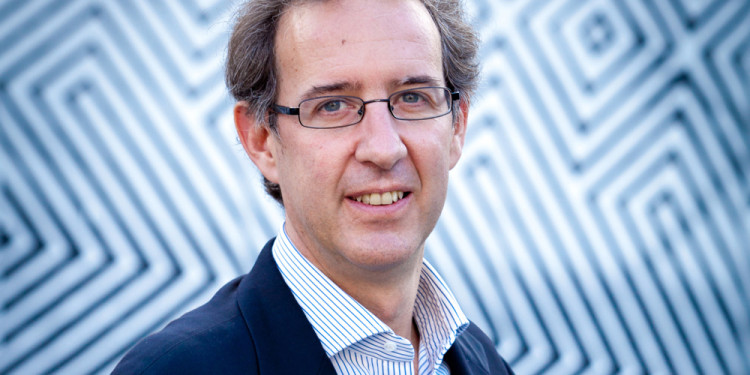
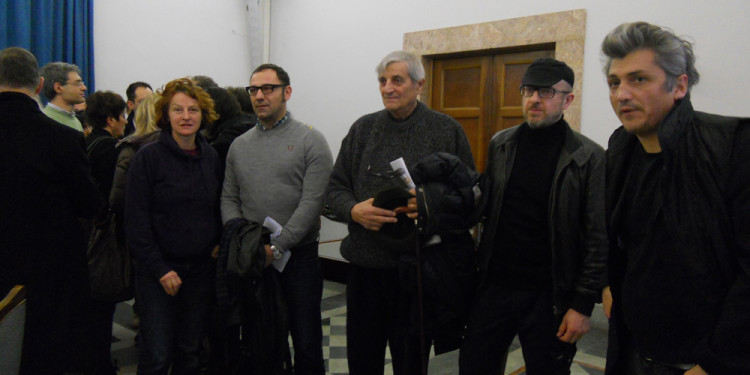
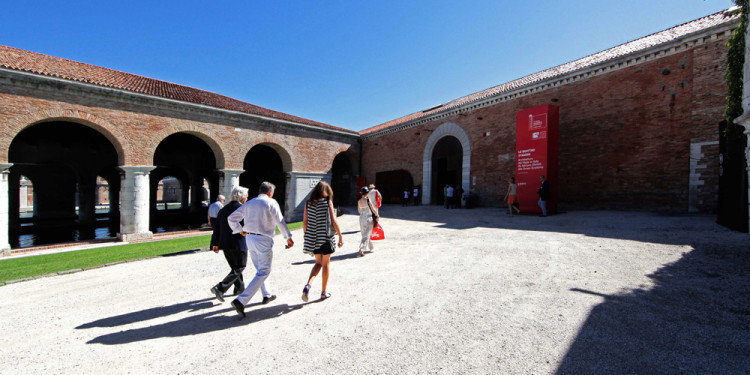
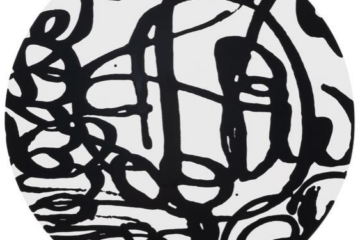
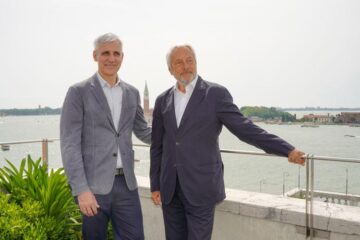
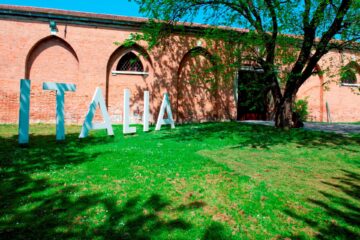
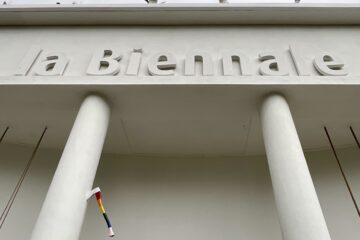

No Comment